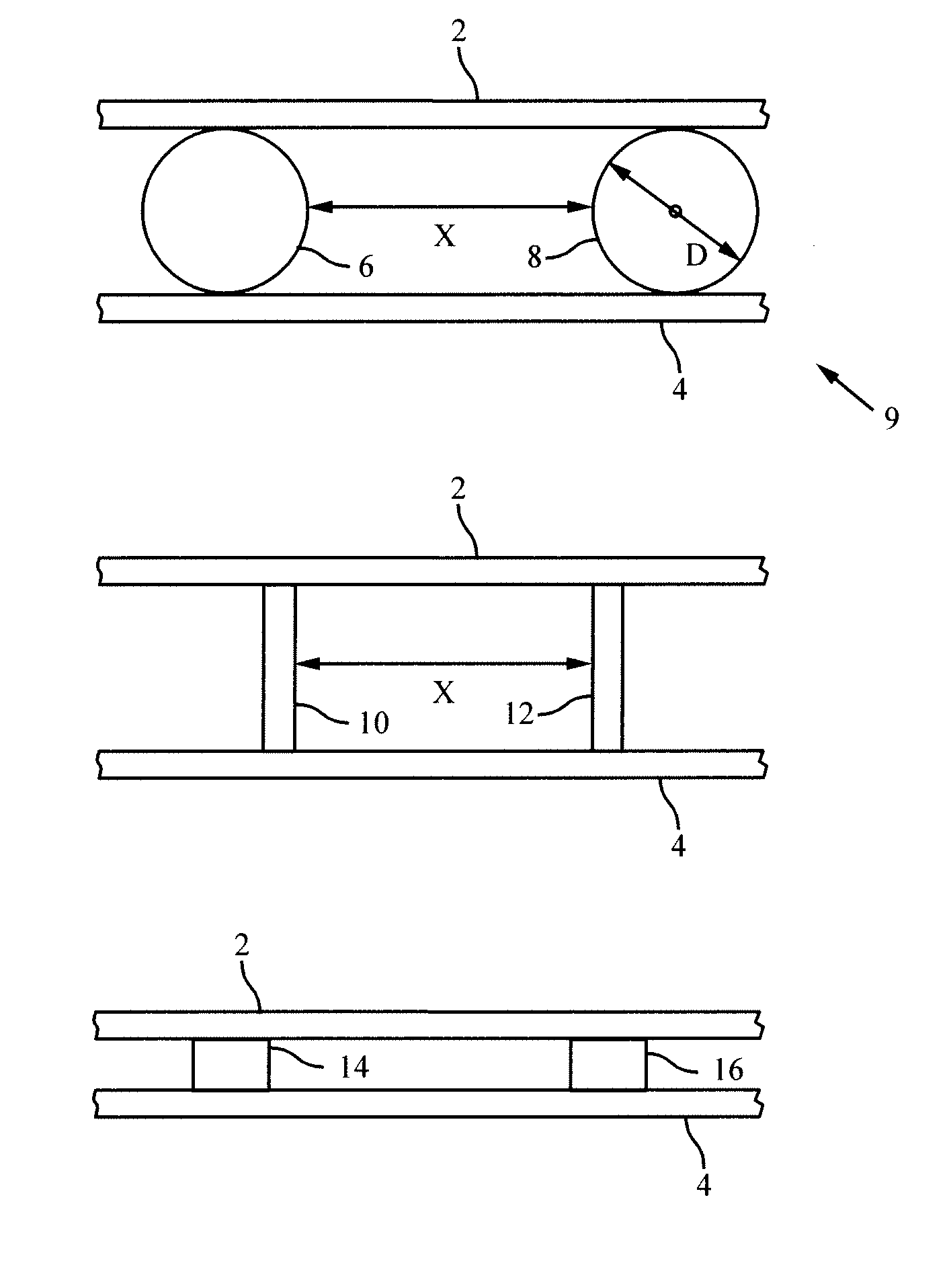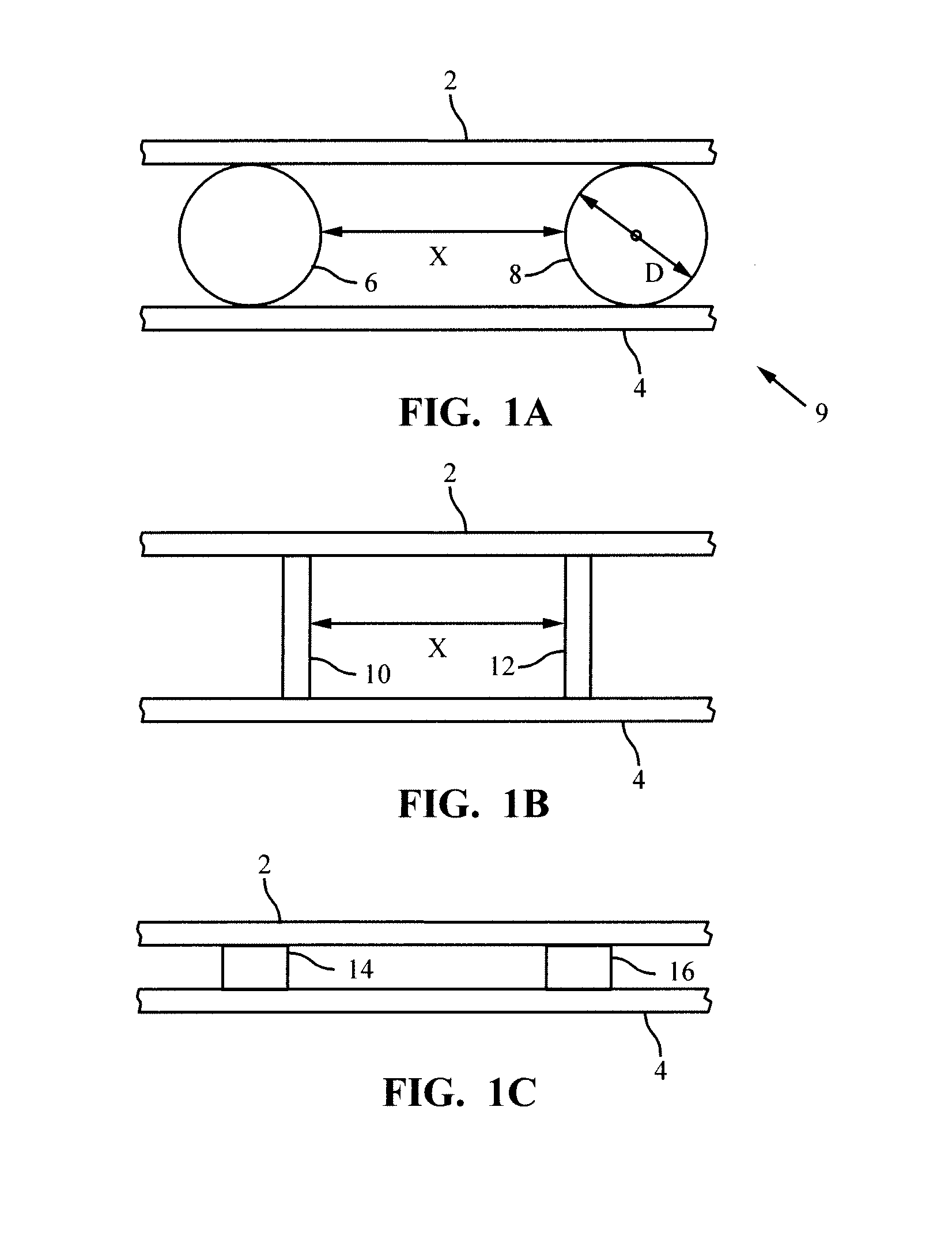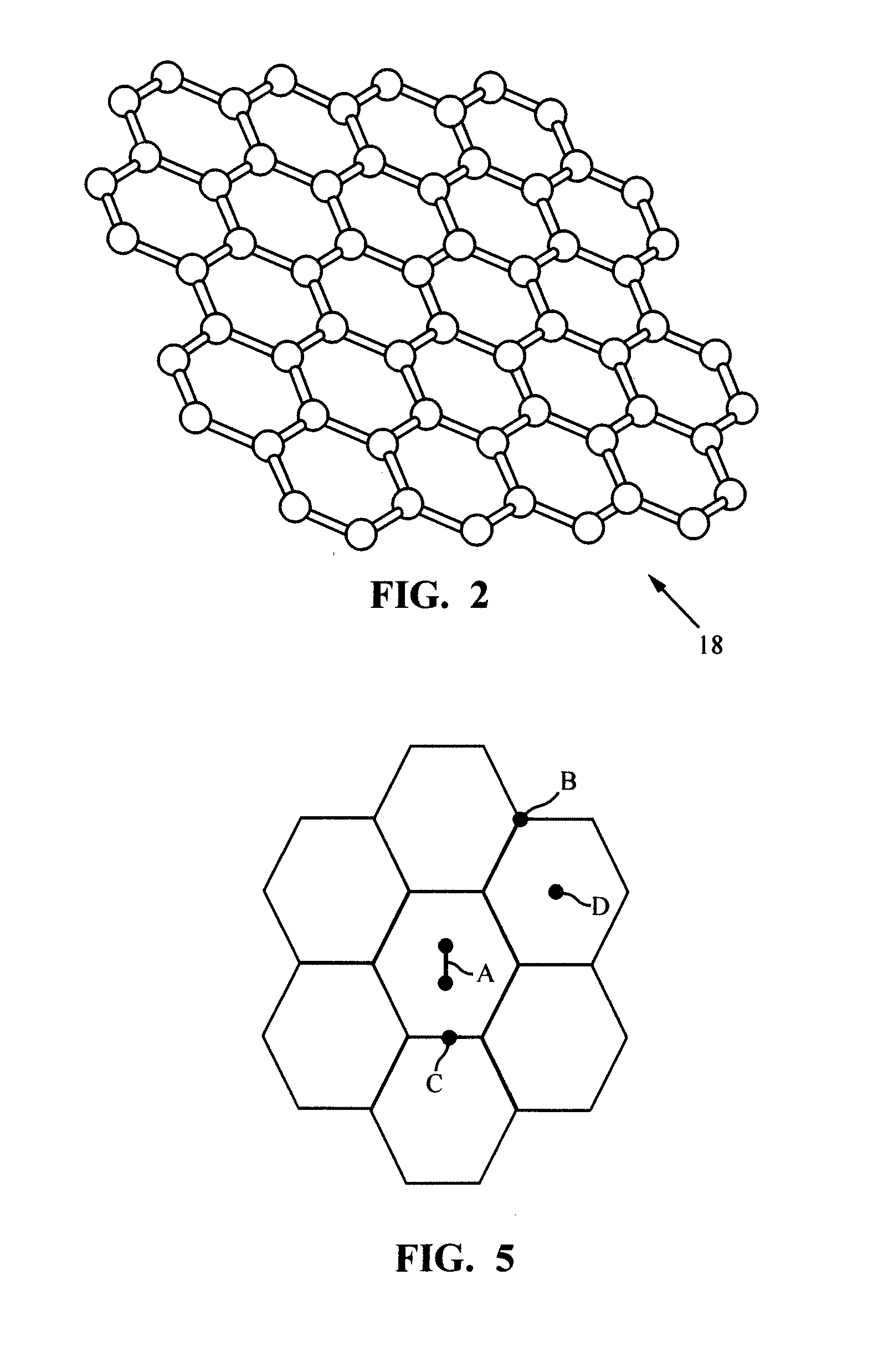Fullerene based hydrogen storage system
a hydrogen storage system and fullerene technology, applied in the field of carbon-based hydrogen storage, can solve the problems of a large dependence on gasoline in these vehicles, the world's energy problems, and the current technology cannot store hydrogen at a sufficient weight percentag
- Summary
- Abstract
- Description
- Claims
- Application Information
AI Technical Summary
Benefits of technology
Problems solved by technology
Method used
Image
Examples
Embodiment Construction
[0019]FIG. 1A represents a pair of graphene sheets 2 (a first graphene sheet) and 4 (a second graphene sheet) spaced apart by a pair of graphene spheres 6 and 8, which are commonly called “buckyballs.” It is to be understood that the arrangement of spheres 6 and 8 of FIG. 1 repeats periodically between the two graphene sheets 2 and 4. The spheres 6 and 8 preferably form a rectangular array and preferably have diameters D in the range of 5 Å (angstroms) to 15 Å and are spaced apart by a distance X that, in one embodiment, is in the range of 10 Å to 500 Å. In one embodiment, graphene sheets 2 and 4 are rectangular in shape with sides of up to 1 m in length and, in one embodiment, are spaced apart by 5 Å to 20 Å. There may be additional graphene sheets (not shown) and spheres (not shown) arranged to form a stack 9 of graphene sheets with an array of spheres between facing adjacent graphene sheets.
[0020]FIG. 1B shows a structure similar to that of FIG. 1A with the difference being that ...
PUM
 Login to View More
Login to View More Abstract
Description
Claims
Application Information
 Login to View More
Login to View More - R&D
- Intellectual Property
- Life Sciences
- Materials
- Tech Scout
- Unparalleled Data Quality
- Higher Quality Content
- 60% Fewer Hallucinations
Browse by: Latest US Patents, China's latest patents, Technical Efficacy Thesaurus, Application Domain, Technology Topic, Popular Technical Reports.
© 2025 PatSnap. All rights reserved.Legal|Privacy policy|Modern Slavery Act Transparency Statement|Sitemap|About US| Contact US: help@patsnap.com



